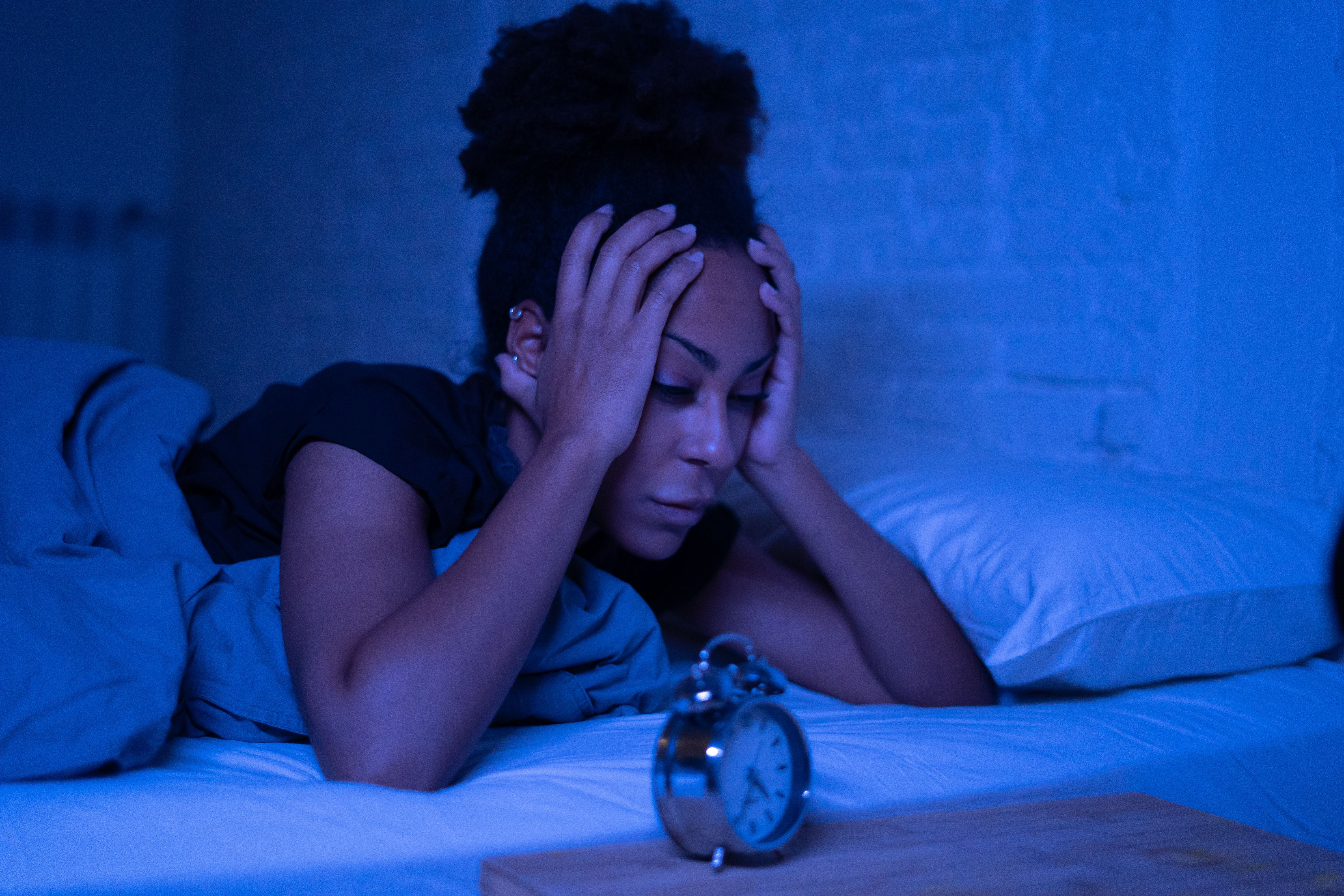News
Article
Patients With Insomnia or Suspected Comorbid Sleep Apnea Respond Positively to Cognitive Behavioral Therapy Program
Author(s):
A secondary analysis investigating the efficacy of a digital, interactive cognitive behavioral therapy program for insomnia (CBTi) demonstrated the positive impacts of the program for patients with insomnia or a high risk of co-morbid insomnia and sleep apnea (COMISA).
Patients with insomnia and co-morbid insomnia and sleep apnea (COMISA) responded positively to treatment administered through a Cognitive Behavioral Therapy for Insomnia (CBTi) program, according to a recent study published in Frontiers in Sleep.1
Woman Who Can't Sleep | image credit: SB Arts Media - stock.adobe.com

Sleep disorders can have a profound impact on someone’s quality of life. Among the most prevalent sleep disorders are obstructive sleep apnea (OSA) and insomnia—which often occur together. As the authors of the present study note, an estimated 30% to 40% of those with insomnia also endure a comorbid OSA, which contributes to worse experiences in regard to daytime functioning, productivity, overall sleep, mental and physical health compared with individuals free of a sleeping disorder. In this same vein, the authors add that those affected by COMISA also have demonstrated to carry an increased risk of 50% to 70% in associated mortality compared to those without these conditions.
The first-line treatment that is recommended for insomnia, and that has been efficacious in cases of COMISA, is CBTi.1 CBTi aims to help individuals identify and change beliefs, as well as develop healthier habits and reform behaviors, that may cause sleep problems. In this treatment, specialists recommend a myriad of tactics that include nap avoidance, setting strict sleep and wake routines, altering caffeine intake or smoking habits, removing the TV from one’s bedroom, implementing relaxation techniques, and more, without relying on alternative methods such as prescribed medication.2
While the literature on CBTi demonstrates the benefits of this method on sleep-related outcomes, the present authors noted, accessing CBTi presents a major challenge. For example, they cited data from Australia that details an approximate 90% of patients with insomnia manage their condition with sleeping pills—as directed by primary care physicians—and only 1% are referred to a psychologist to administer CBTi.1 Efforts to expand access have led to the development of self-guided digital programs. At present, however, these programs have been catered to individuals with insomnia, with insufficient evidence pointing to the benefits they can provide in cases of COMISA. As a response, researchers conducted a study to develop and evaluate a digital CBTi program—Bedtime Window—that employs treatment algorithms for both insomnia (insomnia-alone) and high-risk OSA (suspected COMISA).
Their study was a secondary data analysis performed on a sample of individuals out of Australia in comparison to a previously conducted clinical trial on digital CBTi’s impact on a insomnia. Included individuals scored at least a 15 on the Insomnia Severity Index (ISI; indicating at least moderate insomnia). Participants were barred from participation if they had a prior diagnosis of OSA, as the study aimed to investigate treatment responses in undiagnosed individuals with a high-risk for OSA.
Bedtime Window is a 5-session self-guided interactive digital CBTi program. Sessions were conducted weekly and lasted 20 to 30 minutes. Through a combination of text-based information, images and videos, Bedtime Window administered forms of stimulus control therapy, psychoeducation, cognitive therapy, relaxation therapy, sleep restriction therapy, and sleep hygiene information. Tactics were tailored to participants based off of self-reported lifestyle, sociodemographic, and sleep-based information.
A total of 62 participants qualified for the present trial and changes in self-reported sleepiness was recorded at baseline as well as an 8- and 16-week follow-up.
Overall, was a significant improvement in ISI scores at the 8-week follow-up (average reduction, 7.09; 95% CI, 5.16-9.02; P < .001). Improvements continued through 16 weeks but were not significant. The authors noted that individuals in the suspected COMISA group demonstrated more improvement in areas like sleepiness, depression, anxiety, fatigue, and insomnia symptoms compared to those in the insomnia-alone group. Changes in main time effect in these self-reported measures were, in total, statistically significant across both groups following the implementation of CBTi (P < .0001), except for in the Epworth Sleepiness Scale.
“The main finding of this study is that this interactive digital CBTi program was associated with large and sustained improvements in nocturnal and daytime symptoms of insomnia and associated mental health symptoms in participants with insomnia-alone, and in those with a high-risk of undiagnosed OSA,” the authors concluded, adding, “An important secondary finding is that symptoms of daytime sleepiness did not increase significantly during any week of the digital CBTi program in either group, suggesting that the program may be an effective, safe, and scalable treatment for insomnia in people with suspected COMISA.”
References
1. Sweetman A, Reynolds C, Lack L, et al. Effect of high-risk sleep apnea on treatment-response to a tailored digital cognitive behavioral therapy for insomnia program: a quasi-experimental trial. Front Sleep. 2024;3. doi:10.3389/frsle.2024.1355468
2. Insomnia treatment: Cognitive behavioral therapy instead of sleeping pills. Mayo Clinic. April 5, 2023. Accessed May 6, 2024. https://www.mayoclinic.org/diseases-conditions/insomnia/in-depth/insomnia-treatment/art-20046677#:~:text=CBT%20helps%20you%20find%20out,causes%20of%20your%20sleep%20problems





